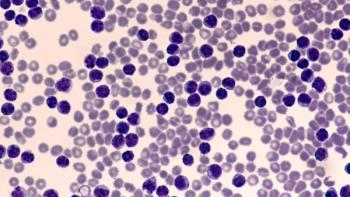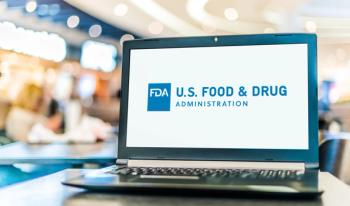
Key Drugs to Watch for Community Pharmacy in 2025
Key Takeaways
- Insulin icodec, a once-weekly basal insulin, shows promise in reducing HbA1c and hypoglycemia rates, potentially improving adherence in diabetes management.
- CagriSema, combining semaglutide and cagrilintide, demonstrates superior weight loss in obesity and type 2 diabetes, offering a dual hormonal approach.
These drugs are set to revolutionize their respective disease states in 2025.
Each year, dozens of new drugs are launched and enter the market, offering countless patients’ new therapeutic options for a multitude of common diseases and conditions, such as in diabetes management, dermatitis, or infectious disease control. For 2025, experts from Clarivate compiled a series of drugs that are poised to significantly transform their indicated disease states in the coming year and beyond.1
Clarivate analysts created the list by evaluating each drug using factors including expected approval or launch dates, a drug’s regulatory status, and notable clinical trial results, as well as other factors. Below, we’ll dive into drugs in the community pharmacy space expected to make an impact in 2025 and highlight their associated therapeutic potential, relevant clinical trial data, and implications for pharmacists and treatment providers.1
Insulin icodec (Awiqli, LAI 287; Novo Nordisk)
Insulin icodec is
Importantly, statistically insignificant rates of hypoglycemia were reported with insulin icodec compared with other insulin analogs throughout the ONWARDS program. Evidence suggests that patients prefer an insulin injection option that reduces the associated dosing burden; insulin icodec’s proliferation in the diabetes space can allow for reduced injection-related burdens and result in better insulin adherence.1,2
In July 2024, the FDA issued a complete response letter for once-weekly basal insulin icodec based on an advisory committee recommendation, issuing a request related to the data and manufacturing process of insulin icodec for T1D. Given the delay, Novo Nordisk expects the drug to launch in the US later in 2025.1,3
Cagrilintide and Semaglutide (CagriSema; Novo Nordisk)
This fixed-dose combination of a GLP-1 receptor agonist (semaglutide) and a long-acting amylin analog (cagrilintide) is designed for use as a once weekly subcutaneous administration to treat obesity and T2D. Each drug
In a phase 2 clinical trial, cagrilintide and semaglutide resulted in meaningful weight loss reduction in patients with T2D, showing superiority to both cagrilintide and semaglutide alone. Multiple phase 3 trials are ongoing; Novo Nordisk recently announced positive results from REDEFINE 1, a phase 3 trial enrolling patients with obesity or overweight. In REDEFINE 1, cagrilintide and semaglutide demonstrated superior weight loss in adults with either obesity or overweight compared with cagrilintide or semaglutide alone and placebo.1,5
Given this next-generation obesity medicine could be more effective than other GLP-1s such as tirzepatide (Zepbound; Eli Lilly) or semaglutide alone (Wegovy, Novo Nordisk), it is expected to make an immediate impact once it hits the market, which is expected in 2026 in the US for obesity and 2028 for T2D.1,4
Lebrikizumab (Ebglyss; Eli Lilly and Co)
Lebrikizumab is designed as a subcutaneous injection to treat adults and children 12 years of age and older weighing 88 pounds or more with moderate-to-severe atopic dermatitis. It is indicated for use every 2 weeks until an adequate clinical response is observed, starting at week 16, followed by monthly administration for maintenance therapy.1,6
The regulatory approval process for lebrikizumab stretches back over a decade to 2012, when it first received FDA fast track designation. Finally, in September 2024, the FDA
Findings from the phase 3b ADapt trial found that lebrikizumab
GSK-3536819 (GSK)
GSK-3536819 is a recombinant protein, conjugated, pentavalent vaccine that targets the 5 groups that comprise the bacteria Neisseria meningitidis—A, B, C, W, and Y—and cause meningococcal disease. It is administered 6 months apart as a 2-dose intramuscular injection for individuals aged 10 to 25 years to protect against meningococcal disease.1
The vaccine combines components of 2 of GSK’s licensed meningococcal vaccines: the meningococcal group B vaccine (Bexsero; GSK) and the meningococcal groups A, C, Y, and W-135 vaccine (Menveo; GSK). As a result, GSK-3536819 can provide protection against the bacteria that causes the most invasive meningococcal disease (IMD) across the globe. It can also reduce the burden associated with receiving multiple injections for full protection against IMD, which could improve compliance and vaccine coverage.1,8
In April 2024, the FDA
mRNA-1345 (mRESVIA; Moderna)
mRNA-1345 is a single, 0.5-mL intramuscular injection for immunization to prevent lower respiratory tract disease (LRTD) caused by respiratory syncytial virus (RSV) in patients 60 years and older. The vaccine uses an mRNA sequence that encodes a stabilized prefusion F glycoprotein, and was approved by the FDA in May 2024.1,9
FDA
Following the FDA’s approval, the Advisory Committee on Immunization Practices recommended use of mRNA-1345 in all adults 75 and older and in adults aged 60 to 74 at an increased risk of severe RSV disease. As RSV remains a major concern, mRNA-1345 could increase protection towards severe disease and heighten overall community protection.1,10
SEL-212 (Sobi, Cartesian Therapeutics)
SEL-212 is designed as a combination of nanoparticles that encapsulate sirolimus and pegylated uricase for use as a once-monthly intravenous infusion to treat chronic refractory gout. The combination could help with limitations around currently available treatments for gout, which deal with reduced efficacy and tolerability due to the presence of anti-drug antibodies.1
By reducing serum urate levels in patients with chronic refractory gout, SEL-212 minimizes harmful deposits of tissue urate that could lead to gout flare ups and joint deformity if left untreated. It received FDA fast track designation in March 2024, and a rolling BLA was submitted to the agency in July 2024. The latter was based on positive clinical trial results from the phase 3 DISSOLVE studies. In DISSOLVE I, patients in the US had sustained reduction in serum uric acid levels for at least 80% of the duration of the trial.1
SEL-212 is expected to launch in 2025 in the US, where it is poised to provide a more effective treatment option compared with currently available medicines for patients with gout.1
REFERENCES
1. Clarivate. Drugs to Watch in 2025. 2025. Accessed January 10, 2025. https://clarivate.com/drugs-to-watch/.
2. McGovern G. Once-weekly injections of icodec insulin improves glycemic control in type 2 diabetes compared to once-daily alternative. Pharmacy Times. Published August 3, 2023. Accessed January 9, 2025. https://www.pharmacytimes.com/view/once-weekly-injections-of-icodec-insulin-improves-glycemic-control-in-type-2-diabetes-compared-to-once-daily-alternative
3. Novo Nordisk. Novo Nordisk receives Complete Response Letter in the US for once-weekly basal insulin icodec. News Release. Released July 10, 2024. Accessed January 9, 2025. https://www.novonordisk.com/news-and-media/news-and-ir-materials/news-details.html?id=168532
4. Dymala K. Co-formulation of semaglutide and cagrilintide shows promise against diabetes and obesity. Pharmacy Times. Published November 29, 2024. Accessed January 9, 2025. https://www.pharmacytimes.com/view/co-formulation-of-semaglutide-and-cagrilintide-shows-promise-against-diabetes-and-obesity
5. Novo Nordisk. Novo Nordisk A/S: CagriSema demonstrates superior weight loss in adults with obesity or overweight in the REDEFINE 1 trial. News Release. Released December 20, 2024. Accessed January 9, 2025. https://www.novonordisk.com/news-and-media/news-and-ir-materials/news-details.html?id=915082
6. Gerlach A. FDA approves lebrikizumab for treatment of atopic dermatitis. Pharmacy Times. Published September 16, 2024. Accessed January 9, 2025. https://www.pharmacytimes.com/view/fda-approves-lebrikizumab-for-treatment-of-atopic-dermatitis
7. McGovern G. Lebrikizumab demonstrates improvements in skin clearance, itch relief in patients with atopic dermatitis. Pharmacy Times. Published November 4, 2024. Accessed January 9, 2025. https://www.pharmacytimes.com/view/lebrikizumab-demonstrates-improvements-in-skin-clearance-itch-relief-in-patients-with-atopic-dermatitis
8. Gallagher A. FDA accepts application for 5-in-1 meningococcal vaccine candidate. Pharmacy Times. Published April 16, 2024. Accessed January 9, 2025. https://www.pharmacytimes.com/view/fda-accepts-application-for-5-in-1-meningococcal-vaccine-candidate
9. Gallagher A. FDA approves mRNA-1345 for protection against lower respiratory tract disease caused by RSV. Pharmacy Times. Published May 31, 2024. Accessed January 9, 2025. https://www.pharmacytimes.com/view/fda-approves-mrna-1345-for-protection-of-lower-respiratory-tract-disease-caused-by-rsv
10. CDC Advisory Committee on Immunization Practices (ACIP). ACIP evidence to recommendations for use of Moderna RSV vaccine (mRESVIA) in all adults aged ≥75 years and in adults aged 60–74 at increased risk of severe RSV disease. Last updated September 5, 2024. Accessed January 10, 2025. https://www.cdc.gov/acip/evidence-to-recommendations/mrna-rsv-vaccine-older-adults-etr.html
Newsletter
Stay informed on drug updates, treatment guidelines, and pharmacy practice trends—subscribe to Pharmacy Times for weekly clinical insights.




















































































































































































































